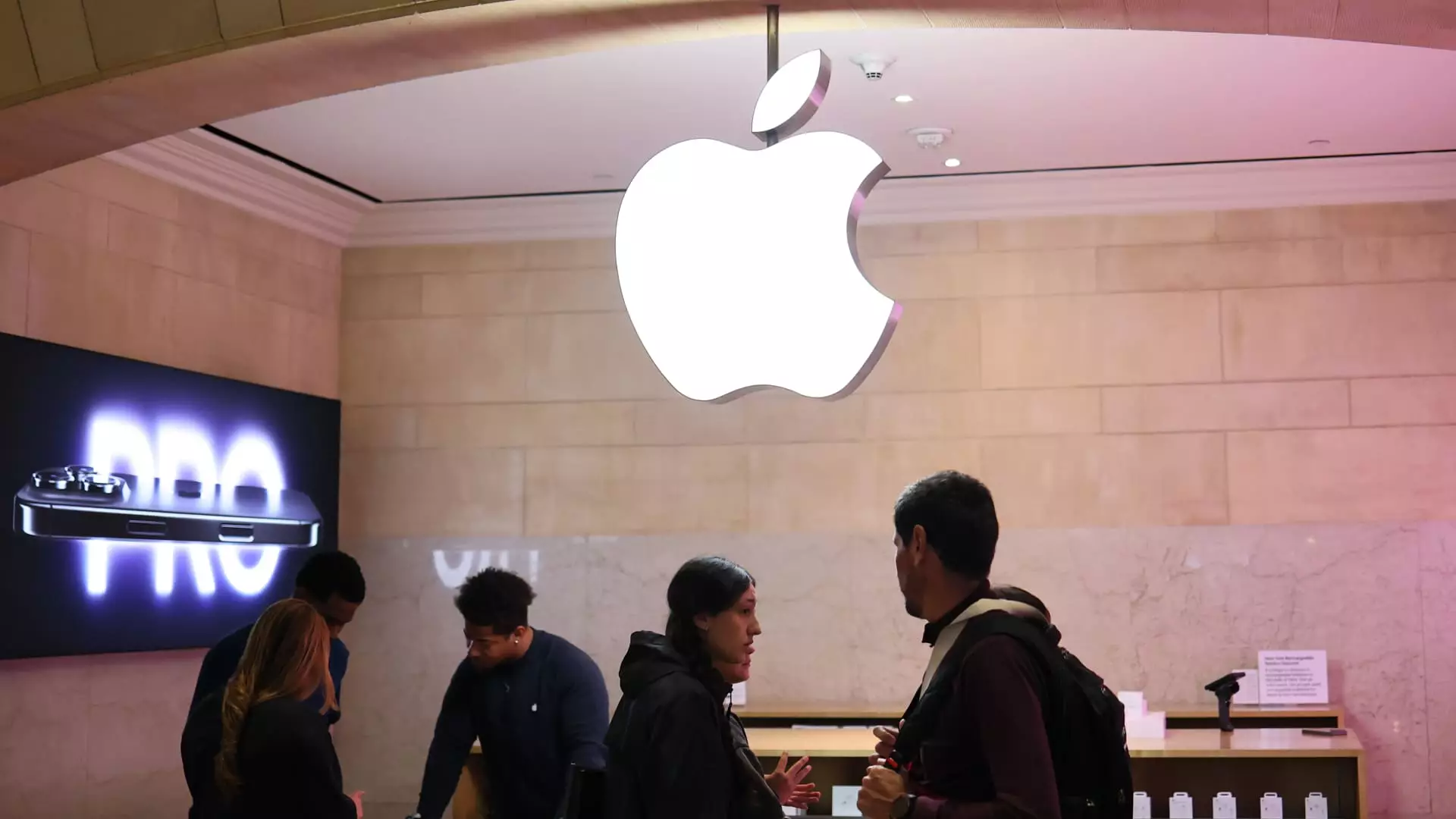The ongoing trade tensions between the United States and China have thrust corporate giants into a vortex of uncertainty, with Apple Inc. standing as a bewildered protagonist in this economic drama. As the world’s most valuable company grapples with tariffs that have escalated to an alarming 145% on certain goods from China, the stakes have never been higher. In an era when consumer goods are intricately woven into global supply chains, what does the future hold for Apple, and are there strategic maneuvers that can protect it from this brewing storm?
Trade Wars and Their Discontents
The recently introduced 90-day suspension on “reciprocal tariffs” may offer a glimmer of hope for some U.S. businesses, but for Apple, the situation remains dire. Their reliance on Chinese supply chains has become a double-edged sword. Despite efforts to diversify production, almost 80% of the iPhones shipped to the U.S. still originate from China. This stark reality renders the Cupertino-based titan vulnerable to geopolitical crossfires that most companies can barely navigate. As Dan Ives from Wedbush Securities succinctly articulated, Apple appears to be adrift in a tumultuous ocean without a lifebuoy.
This analogy captures a more profound truth: Apple’s steadfast commitment to innovation and premium product quality could be jeopardized further by insurmountable production costs and supply chain disruptions stemming from these tariffs. Could tariffs morph from a mere obstacle into a lethal threat that delays technological advancements and market readiness? Given that Apple’s rivals could exploit these vulnerabilities, the ongoing trade war ceases to be merely a business concern; it morphs into an existential crisis for one of America’s most iconic brands.
Stockpiling as a Tactical Measure
Apple is reportedly undertaking strategies such as stockpiling iPhones to offset immediate tariff impacts. However, this solution carries inherent risks. How long can stockpiles sustain market demand especially as consumer anticipations shift, prompting increased purchasing before the implementation of higher prices? According to research from Omdia, stockpiling may be a stopgap that provides temporary relief but fails to address long-term viability. Instead, such strategies could complicate cash flow management and obscure actual market metrics.
If consumers know that a price increase might be imminent, might they rush to purchase, thereby generating artificially inflated sales figures that only further skew Apple’s production strategy? The unpredictable nature of consumer behavior during a tariff-induced crisis adds another layer of complexity to a situation that is already fraught with uncertainty.
India: A Silver Lining or Just a Mirage?
As Apple pivots toward diversifying its manufacturing base, India has emerged as a focal point in its long-term strategy. However, the challenges of scaling production are immense. Apple’s initial shift towards Indian manufacturing, particularly for its flagship products, has been a years-long endeavor. Expectations are unrealistic if stakeholders believe Apple can seamlessly transition away from its historical reliance on China in a matter of months. Experts suggest that establishing the infrastructure necessary to produce an adequate supply of iPhones in India could take up to two years—time that Apple may not have.
Moreover, even this relocation to India is not impervious to tariff threats. Lower tariff rates for imports from India to the U.S. might provide temporary relief, but any political shifts or changes in trade policy could quickly obliterate these advantages. Thus, while India could be a strategic ally, relying too heavily on it carries its own set of risks that Apple must navigate thoughtfully.
Appealing for Relief: A Double-Edged Sword
Amid these strategic uncertainties, Apple faces the option of appealing to the Trump administration for exemptions from tariffs on imports from China. While this could yield short-term advantages, it raises critical questions about the company’s long-term positioning. The potential for concessions based on past investments in the U.S., including a $500 billion commitment, signals that Apple may still have a chance at negotiating favorable terms. However, such appeals can also entangle the company in a complicated web of political favoritism that could lead to long-term branding repercussions.
If the administration responds to these appeals favorably, could it lead to an expectation for preferential treatment in future cases? Despite the potential for relief, Apple must weigh its options carefully—any missteps in this political dance could result in public backlash, damaging consumer trust and brand integrity.
While the trade landscape evolves and Apple’s strategy unfolds, questions about what lies ahead persist, demonstrating that the intersection of technology and politics may be fraught with more complexities than we are currently prepared to understand.

